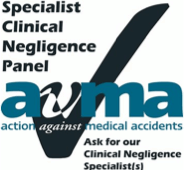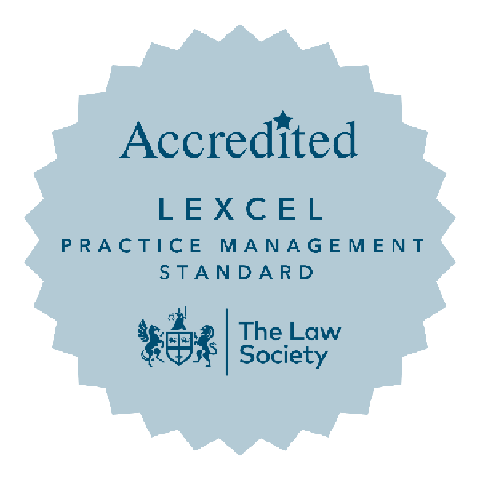- Home >
- Birth Injury Claims >
- Shoulder Dystocia Claims
When an obstetric emergency like shoulder dystocia is mishandled, it can cause serious, potentially permanent, damage to a mother, baby or both. If you or someone you love suffered due to preventable complications during labour, we will fight for your right to compensation and answers.
For over 30 years, our specialist birth injury solicitors have advised hundreds of clients and recovered millions in compensation. Through meticulous investigation, compassionate support and a commitment to “no win, no fee” funding, trust our experts to help you find closure and protect your family’s financial future.

Do you have a shoulder dystocia compensation claim?
Shoulder dystocia is when the baby’s shoulder is stuck behind the mother’s pubic bone during birth. Obstetricians and midwives are trained for this, but if it is delayed or poorly executed, it can cause fractures, nerve damage, or brain injury from oxygen starvation.
If you, your baby, or a loved one was injured due to mistreated shoulder dystocia, you may be entitled to compensation. Our birth injury claim solicitors investigate every detail of your case, ensuring justice for you and your family.

The specialist shoulder dystocia claims solicitors for Essex & East Anglia
Since 1993, our birth injury lawyers have helped clients affected by shoulder dystocia find answers and achieve financial security.
We are the experts in childbirth injury claims, recovering millions in compensation and securing explanations that allow our clients to move on. Offering risk-free funding and with 96% of cases settled out of court, choose us for specialist support and minimal stress.
What does our shoulder dystocia negligence claim process look like?

A free initial consultation
Call us, request a callback or complete our online form and we’ll assess if you have a valid medical negligence claim.

Funding your claim
Discover the ways we can fund your claim without you paying a penny at any stage of the process.

Investigating evidence
We gather medical records, witness statements and more to learn what happened to you and prove your claim.

Instructing independent medical experts
We work with impartial, experienced medical experts to establish whether your injuries were due to substandard medical care.

Valuing your claim
We assess your health and financial losses to accurately estimate how much compensation your claim is worth.

Presenting your case
We contact the Defendants and the Courts on your behalf to set out your allegations and receive a response.

Negotiating a settlement
We work to achieve a fair settlement for you outside the courtroom – this is how 96% of our cases end.

Preparing for Trial
If we must proceed to Trial, we fully prepare you for what to expect so you receive the right result in court.
FAQs about shoulder dystocia claims
What is shoulder dystocia?
Shoulder dystocia is when one or both of the baby’s shoulders become stuck during birth, usually against the mother’s pelvis. The ‘turtle sign’ – when the baby’s head appears from the birth canal, but retreats shortly after – is an indicator of shoulder dystocia.
Shoulder dystocia is a fairly common obstetric emergency, affecting approximately 3% of all vaginal births. Obstetricians, midwives and other medical professionals should be well-trained to manage cases of shoulder dystocia.
What are common shoulder dystocia risk factors?
There are few signs of shoulder dystocia before birth, making it virtually impossible to predict. However, some risk factors make shoulder dystocia more likely to occur, including:
- A suspected large baby
- Maternal diabetes
- Maternal obesity
- Induced labour
- Mother receives an epidural
- Prolonged second stage of labour
- Family history of shoulder dystocia
- Use of forceps or ventouse during delivery
If these risk factors are not considered before delivery and steps are taken to minimise the risk, this may contribute to a childbirth injury claim.
How should medical professionals manage shoulder dystocia?
Obstetricians, midwives and other healthcare providers are highly trained in the management of birth injuries such as shoulder dystocia. Techniques and actions used to handle these situations include:
- The McRoberts Manoeuvre
- The Gaskin Manoeuvre
- Suprapubic pressure
- Episiotomy
- Asking the mother to stop pushing temporarily
For more information on the steps healthcare professionals should take to prevent shoulder dystocia, read our article: “What you need to know about shoulder dystocia”.
Failure to act during labour with these actions can result in injury to mother, baby or both, and be the basis of a shoulder dystocia claim.
What birth injuries can be caused by shoulder dystocia?
Shoulder dystocia can cause numerous injuries to babies and mothers during childbirth. For babies, these include:
- Brachial plexus nerve injuries, such as Erb’s Palsy and Klumpke’s Palsy (brachial plexus injuries affect 10% of shoulder dystocia situations)
- Shoulder, arm and clavicle fractures
- Contusions and bruising of the arm, shoulder or neck
- Oxygen deprivation, causing brain injuries such as Cerebral Palsy
Some of these injuries only have short-term ramifications, but babies can suffer permanent injury due to shoulder dystocia.
For the mother, potential injuries include:
- Heavy bleeding after birth
- Severe perineal tears
- Vaginal lacerations
- Cervical tears
- Bladder or uterine ruptures
- Symphyseal separation
- Sacroiliac joint dislocation
If you, your child or a loved one suffered any of these injuries due to negligent treatment, start your claim with our birth injury solicitors.
Can shoulder dystocia lead to a medical negligence claim?
Yes. Medical negligence claims can arise from shoulder dystocia for numerous reasons, including:
- Avoidable delay in diagnosing and treating shoulder dystocia
- Failure to provide a caesarean section if there is a significant risk of shoulder dystocia
- Excessive pulling and twisting of the baby during manoeuvres
- Failure to follow correct safety protocols
- Carrying out unnecessary medical intervention when trying to dislodge the shoulder
- Preventable delay in performing an emergency C-Section
If you believe your birth was impacted by avoidable complications during labour, our birth trauma solicitors are here to give your expert legal advice and support.
How do I prove my or my child’s injury was due to negligence?
To prove you have a valid shoulder dystocia claim, you must answer three crucial questions:
- Did a medical professional breach their duty of care to me or my child?
- Did my child or I suffer pain, injury, financial loss or damage?
- Was the injury directly caused by the breach of duty?
If, on the Balance of Probabilities, you can answer yes to all three questions, then you have a valid compensation claim.
With decades of expertise in handling intricate claims, our ‘no win, no fee’ birth injury solicitors can assess the validity of your case and guide you through every stage of the medical negligence claims process.
Contact our expert shoulder dystocia claim solicitors
If you, your child or a loved one suffered due to mishandled shoulder dystocia, speak to our team about your options. We are here to listen and advise you on your next steps.

Lexcel accredited medical negligence claims solicitors
We are proud to be a Lexcel-accredited practice. The accreditation is a mark of quality and comes directly from the Law Society.
A recent assessment described us as a “Centre of Excellence” and we continue to operate to the highest standards across all main areas of our field. These include client care, case management, financial management, structure and strategy, people management, risk management, information management and file management.




Industry Recognised

